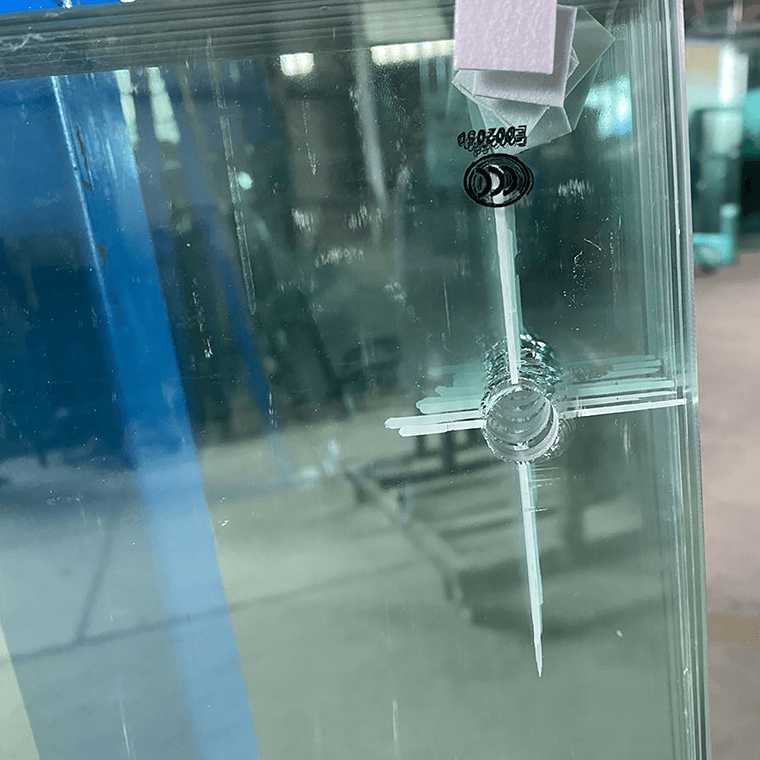Q: I want to remove a sliding glass shower enclosure from a tub with tile walls. How do I do this, including patching the holes in the tile?
A: Glass shower enclosures come in a few different styles, but in general the process involves removing the doors, then the top, side and bottom tracks — in that order. Bathroom Window Glass

Sometimes you can just stand in the tub and lift and tilt the inside door to disengage the rollers that ride in the top rail. In other cases, you will need to first remove a metal piece at the bottom that helps keep the doors in the track. This piece should just screw onto the bottom track, but it could be on the inside or the outside of the tub, depending on the style. Once one door is out, remove the other one in a similar manner.
Next comes the top rail. It just sits on the tops of the side rails but the installer might have secured this connection with silicone caulk. If there is caulk, cut through it with a utility knife, taking care not to scratch the tile. If you are dealing with a fiberglass tub surround, you need to be even more careful.
10 easy ways to upgrade your rental bathroom right now
Once the rail is free, just lift it up and set it aside.
The side rails come next. These are the only pieces that are screwed in place, but there is probably silicone caulk here too. Remove the screws, then cut through the caulk on both sides of the rail, starting at the top. Once you’ve freed enough of the rail to fit in a wide putty knife, slip it behind the rail and you may be able to push down hard enough to slice through the remaining caulk inside and out simultaneously. Try using a plastic putty knife for this to eliminate the chance of scratching the tile.
If the caulk seems too stiff to cut through, soften it with caulk remover, such as Goo Gone caulk remover ($9.47 for a 14-ounce spray bottle at Home Depot). Use a gel remover so it will cling to the vertical surface, and check the label to make sure the remover is okay to use with the type of surround you have. The Goo Gone formula, a gel, is fine to use on both fiberglass and tile, and the label says it softens both silicone and acrylic caulk. Because you’re dealing with cured caulk, wait at least two hours — and up to seven — for the caulk to soften enough so you can cut through it. The remover is a petroleum-based solvent, so wear gloves.
Once you remove both side rails, free the bottom rail. It’s just held on with caulk, but by this point you should be experienced in removing that.
Finish up by removing all of the caulk remnants. Scrape off as much as possible, using a razor blade held as flat as possible to the surface. Remove the final remnants with caulk remover. Wash off any remaining remover with warm, soapy water.
To patch the holes, use a two-part filler made for holes in automobile bodies. A customer service representative for Bondo, a 3M brand, recommended using fiberglass filler, which is waterproof, over regular auto body filler, which is not. But she said either would work as long as you paint the patches, which you would want to do anyway to match the tile and to protect the patch from cleaning solutions. If you opt for the fiberglass filler, be sure to buy a product that includes short strands of fiberglass; you don’t want the type that requires applying fiberglass mesh and painting over it with the resin. A quart of Bondo glass reinforced filler is $21.99 at Ace Hardware. The hardener, sold separately, is $6.99 for a .37-ounce tube. (A 14-ounce kit with Bondo auto body filler costs $14.99 and the hardener is included.)

Car Front Glass A YouTube video from Ron Hazelton shows the patching process with the regular auto body filler. Mix the resin and hardener and press the mixture into the screw holes with a putty knife. When the patch cures slightly but is still rubbery, slice off the excess with a razor blade. The patch should be flush with the tile surface and confined to just the screw holes; don’t leave smears across the tile. Sand the patch with very fine sandpaper — Hazelton uses 600-grit, lubricated with water — to make it as smooth as the tile. Then mix touch-up porcelain paint to match the color of the tile as closely as possible. The TileFix tile and stone repair kit ($22.71 at Home Depot) includes small bottles of eight colors and a guide to combining them to match virtually any color. Apply the paint with a small artist’s brush. This kit also contains acrylic putty that you could use to fill the holes, but it remains slightly flexible when cured.